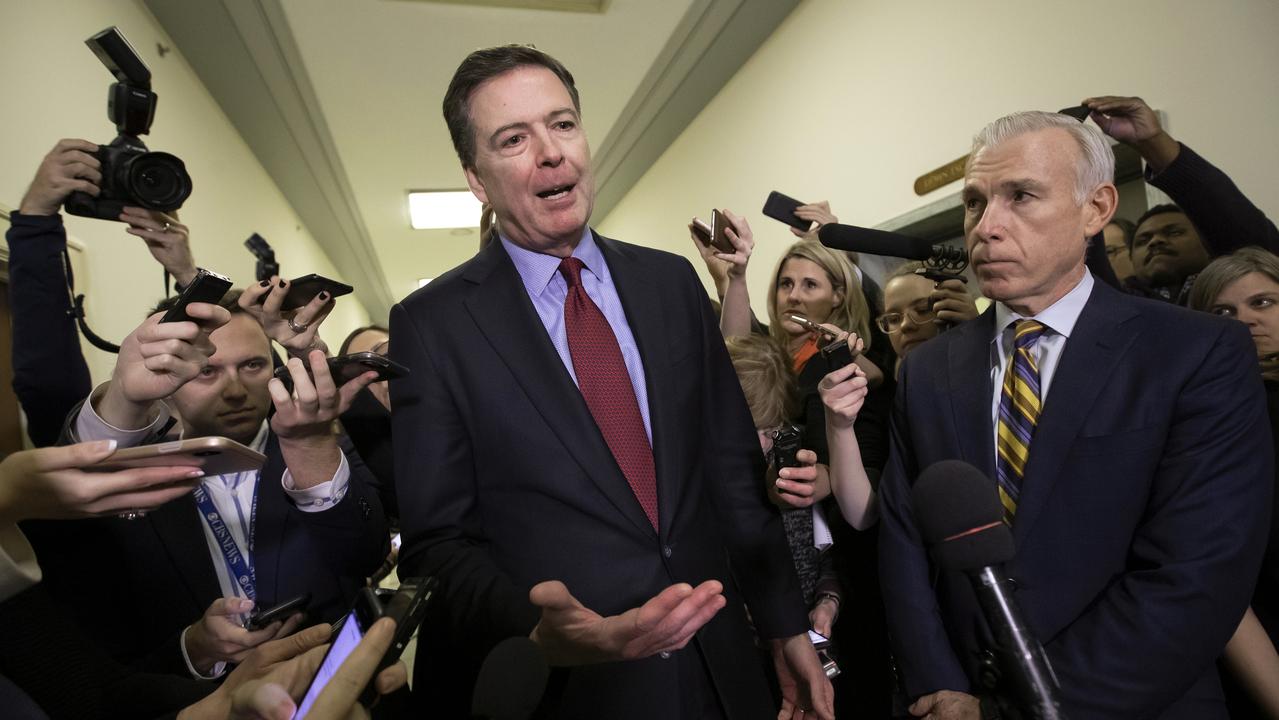Beware new disability sector boom fallout
Jobs and costs will soar in the disability sector.

As the resource boom fades, a new explosion is about to replace it: the disability boom. Within three years the National Disability Insurance Scheme will start injecting $22 billion a year into the economy — about what the federal government spends on defence.
But the NDIS will have far greater impact on the economy: the government’s recent $50bn submarine contract, for instance, is expected to generate about 2800 jobs; the NDIS will require 300,000-plus new full and part-time jobs by the time it is meant to be fully operational in 2020.
The NDIS was created to provide “reasonable and necessary” support for Australians aged under 65 with a permanent and significant disability. Based on a 2011 design by the Productivity Commission, it consolidates and standardises patchy state government programs and significantly increases overall funding, with the aim of improving the lives of those most in need of government support.
No one disputes the aims and good intentions underpinning the scheme. But the challenges for the job market and the firms meant to provide NDIS services — quite aside from the likely fiscal costs — have been underappreciated.
Critics of the scheme have focused rightly on the potential for eligibility creep. Latest estimates suggest that by 2020, 460,000 Australians — those classified as having a “tier 3” or severe disability — will receive tailored packages of federally funded support from private providers of disability care services, up from about 40,000 during the trials. That’s up from an official estimate of 411,000 in 2011, when the ultimate cost was estimated at less than $14bn a year.
But consider what is being asked of the job market: the attendant disability workforce is meant to swell from 76,600 full-time-equivalent workers in 2015 to 162,000 by 2020. Given about half of the workers in the sector are part time, the total will easily exceed 300,000.
“These are big numbers, implying a cumulative three-year jobs boost on par with the mining boom; it’s also bigger than the jobs growth connected to the rollout of the National Broadband Network,” says Andrew Boak, a Goldman Sachs economist in Sydney. “And, importantly, as distinct from those jobs, these ones will be permanent and will not disappear as the development phase draws to a close.”
Bruce Bonyhady, the former chairman of the National Disability Insurance Agency, the body overseeing access to, planning and payments of the NDIS, points out a higher percentage of these new jobs will be in regional and rural areas “where economic growth and, hence, employment growth are below the national average”.
Indeed, such huge demand, especially in regional areas, could leave the NDIS vulnerable to a cost blowout. “Understanding the nature of the challenges that will affect expansion of the workforce, and how they will affect wages, cost and services delivery is particularly important,” the Productivity Commission says in an issues paper foreshadowing a final review of the scheme before it starts fully in most states on July 1 next year.
Nearly half of the present NDIS providers already have said it has been “extremely or moderately difficult” to attract disability support workers. And more than a quarter of those surveyed by the government in 2014 said they would often employ workers they thought were not experienced or qualified enough. This is far from a babysitter workforce; alongside specialist allied health workers, carers will need various levels of qualifications.
The NDIA produces a comprehensive 50-page list of the prices it is willing to pay for transport, carer, infrastructure, goods and services. For a standard hour of caring, for instance, the NDIA will pay $42.71 during the week, $59.36 on Saturdays and $92.96 on Sundays. Will this be enough? It’s quite possible the prices the NDIS is willing to pay won’t be enough to pull enough staff into the sector from other parts of the economy in such a short time, suggesting the NDIA may have to ratchet up the wage costs in future years.
“A material tailwind from the NDIS supports the case for both a recovery in employment and a stronger inflationary pulse for wages over the coming years,” says Boak. That could be quite an understatement. Even if the job market is able to absorb the workers, the Australian Services Union and United Voice — two big unions in the care sector — could push for further pay rises.
And in its submission to the Productivity Commission’s inquiry, the Health Services Union warned that a gutting of worker conditions was already under way in the sector.
“Individualisation of supports, coupled with low and capped pricing, is eroding workforce conditions and increasing income insecurity,” the union’s submission to the inquiry says.
“Employers are using the spectre of the NDIS to argue for reductions to minimum shift engagement lengths in the four-yearly review of the Social, Community, Home Care and Disability Services Industry Award 2010.”
The Australian revealed this week that the way the NDIS works means many people with disabilities will become employers themselves by hiring their own staff to provide support during the hours for which they are funded by the scheme. In some cases these shifts go no longer than an hour at a time, most often in the mornings and evenings. One major disability services provider in the Victorian trial has reported a fivefold rise in the number of shifts lasting less than one hour in just one year; from 3 per cent to 15 per cent.
The Australian National Audit Office predicted last year it would “take at least a decade for the right number of disability workers and businesses to come online”, but stakeholders have warned such hopes will be jeopardised if workforce issues are not addressed immediately.
In its submission to the Productivity Commission inquiry, legal firm Maurice Blackburn slammed a lack of clarity on eligibility and a rapid rollout schedule that, it said, would combine with a workforce shortage in a “disastrous” way. “The rollout time frame of the NDIS is highly ambitious and increases the serious risk of inadequate delivery of services to participants,” its submission says. “It also poses serious financial risks to the scheme as a whole.”
The service providers may not be prepared for the surging demand either. The Productivity Commission estimates the number of businesses servicing the NDIS will explode from 3520 now to between 13,500 and 40,000 by 2020.
Across time, the NDIA’s fixed price structure is meant to fall away, leaving a competitive market among the influx of new large and small providers vying for the disability dollar. “Of course the danger is the providers argue to keep this system to protect the participants when in fact it’s about protecting their revenues,” says Jeremy Sammut, a researcher at free market think tank the Centre for Independent Studies.
A few of the larger disability providers have merged recently to reap economies of scale but early signs are the number of providers isn’t increasing as expected. Barriers to entry are significant (such as registration for working with children) and a competitive market may not yet emerge. Unscrupulous operators could take advantage of the scheme just as government education loans, renewable energy and rental subsidies have been variously rorted through the years.
The Productivity Commission has flagged a mismatch between benchmark package costs and actual package costs. “There is a greater than expected level of variability in package costs for participants with similar conditions and levels of function,” it finds. The Rudd government’s pink batts fiasco is a reminder that such large flows of public money can attract shady operators and underpin fraud, especially when the customers, the severely disabled, are potentially more prone to being taken advantage of.
As The Australian reported this week, concerns about eligibility rules still loom over the scheme. “There’s no indication at this point that the 460,000 (scheme participants) is wrong, although we’ve seen cost pressure around early intervention,” says Bonyhady. Against the Productivity Commission’s 2011 advice, eligibility for NDIS support has been extended to include children with learning difficulties. This is the area where costs have exceeded budget in the trial period of 30,280 participants that wound up last year, and that submissions to the Productivity Commission have focused on.
The number of people diagnosed with autism has grown at an average pace of 18.3 per cent a year between 2004 and 2012, when 115,000 had the condition.
In 2015 there were 164,000 Australians with autism, according to figures released by the Australian Bureau of Statistics, a 42.1% increase from the 115,400 with the condition in 2012.
“As we’ve seen with the Disability Support Pension and Medicare-funded mental health services, there can be pressure on doctors to give people diagnoses to get the benefits,” says Sammut.
Teagan Marnell, 28, had the highest hopes for the NDIS when it began in her home state, South Australia, with the promise of funding early intervention for her son Makai, now 5, who has autism.
The promise of the scheme has been watered down by reality, however.
“There is a general consensus among people I have spoken to, and I agree with them, that the promise has not eventuated and things are worse than before,” Marnell says.
“I have had to fight for every piece of funding for Makai and we’re up to $25,000 with no idea how long it will last. The government came out and said the best practice for autism intervention is 15 to 20 hours a week applied behavioural therapy, and it is not enough even for that.”
The result, she says, is an imperfect limbo. The whole point of early intervention was to save the scheme money in the long run but nobody modelled how many children with autism would end up being eligible, so the NDIS agency has bunkered down to keep many of them out.
Meanwhile, old programs that used to support families in precisely the same way are being phased out.
“Don’t tell us you are going to help us if you aren’t going to be able to help us,” Marnell says.
There has been a steady rise in the share of the population classified as disabled since the ABS conducted its first disability survey in 1981. Then, 1.94 million or 13 per cent of people were classified as disabled.
In 2015, using a similar definition, 18 per cent or 4.3 million of Australians reported having a disability.
The present eligibility criteria are vague, leaving hundreds of thousands of children with development delay and people with mental illness potentially on the threshold.
“Autism and spectrum disorders should be black-and-white but ‘learning difficulties’ is more of a grey area,” says Fiona Martin, an education development psychologist in Sydney, who points out that assessment practices of such conditions vary across the country. “Whenever there is funding linked to a particular disorder often there are more false positives because of children who are close to the line. It’s up to the doctor.”
To compound the problem, paediatricians, psychiatrists and clinical psychologists have their own assessment methods.
In fact, the Productivity Commission has identified a further four million people with tier 2 disabilities, those ageing with disability and people with temporary disabilities or mild levels of disability. “Out of the $22bn, only $130 million is assigned to tier 2, so the NDIA board needs the ability to move the money and target it to make sure the total stays under $22bn,” Bonyhady says.
If the Medicare Benefits Schedule, which sets out the fees the government pays doctors for medical services, is anything to go by, the NDIS is destined for cost overruns and expanding eligibility. The MBS has proliferated to almost 5800 procedures, up from about 300 in the 1970s, while the cost has more than doubled in a decade to $22bn. “To be clear, such large public projects are rarely rolled out on schedule and on budget,” Goldman Sachs’s Boak says.
There could be pressure on administration costs, too. Bonyhady says the present 7 per cent cap (out of $22bn) is a false economy and quite low by insurance standards. “In most organisations it would be closer to 10 per cent; if you excessively squeeze the administration costs you can lead to much greater costs down the track because you have not been able to properly control package costs, which are more than 90 per cent of total costs and so the primary driver,” he says.
The NDIS almost certainly will improve the lives of many who are most deserving of public support, but its longer-term impact on traditional measures of economic progress such as labour productivity and wage growth may be more ambiguous.
When the Gillard government introduced the scheme in 2013, it chose to lift the Medicare levy — in effect, income tax — by 0.5 percentage points. But that covers only a third of the NDIS costs. The fiscal cost of paying for the entire scheme could damage work incentives too if the government ratchets up income taxes further.
For the government, at least, the NDIS should be good news, keeping a lid on unemployment and providing photo opportunities and a vast new administrative apparatus to overlook. Nevertheless, the potential for embarrassing costs blowouts, or worse, is high.
Additional reporting: Rick Morton




To join the conversation, please log in. Don't have an account? Register
Join the conversation, you are commenting as Logout